Mention “the Italian Riviera,” and people are apt to respond, “Yes, the Amalfi Coast is on my bucket list.” But the Amalfi Coast, south of Naples and more than 400 miles away, already has a name: the Amalfi Coast. The Italian Riviera, or Liguria, on the other hand, stretches between the Tuscan coast all the way to where the country ends at the French border and the Cote d’Azur. Paradoxically, despite its popularity, northern Italy’s Liguria is one of the country’s more misunderstood places, even among the reasonably well-traveled.
To complicate matters even further, Liguria itself is divided in half by the city of Genoa, with Riviera di Ponente (coast of the setting sun) to the west and Riviera di Levante (coast of the rising sun) to the east. Because it wouldn’t be feasible to tackle the entire Riviera in a long weekend (or even a week), better to choose Levante, with all its cachet and relatively compact cluster of delights—most prominently, the Portofino peninsula and Cinque Terre—for a first trip to the region.
As far as getting there, it’s best to fly into Milan Malpensa—often a cheaper ticket than Rome, and closer to the Ligurian coast. The newest high-speed trains can whisk you to Genoa in under two hours. A well-curated four-day trip will only allow you to scratch the surface of one of Italy’s most breathtaking resort areas, but you can still marvel at the most famous spots and see a town or two where Americans rarely visit—but should.
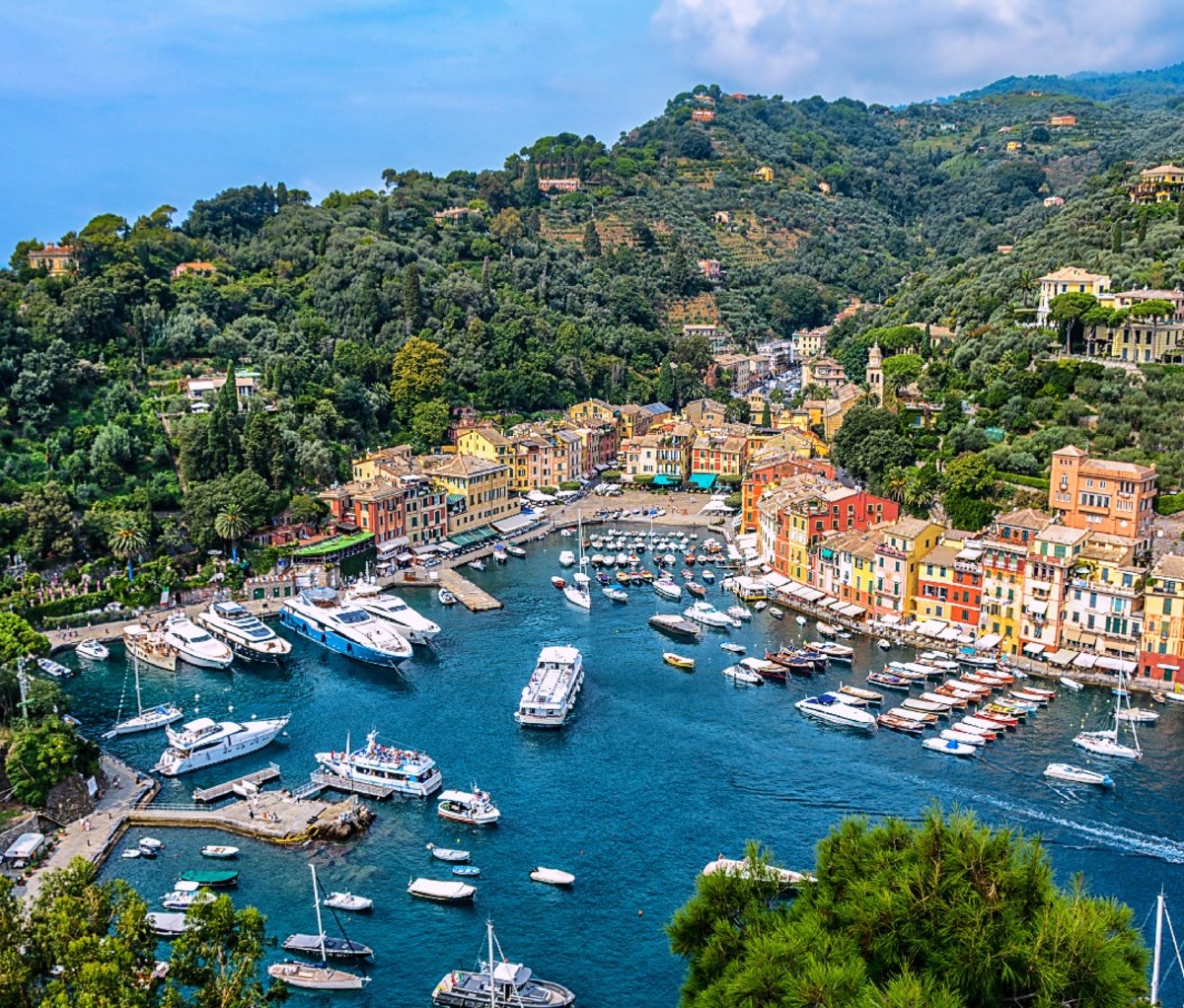
Day 1: Portofino
Plan an overnight flight to maximize your time. You’ll land at Milan Malpensa, northern Italy’s largest international airport, and arrive at the Portofino peninsula by noon or 1 p.m. To get to the actual town of Portofino, which is tucked into a picturesque harbor at the tip of the cape, you’ll need to hop a ferry or hail a taxi from Rapallo or Santa Margarita Liguria. For lodgings, choose the incomparable: That would be Splendido, a captivating resort nestled into the hillside above the marina and managed by the esteemed Belmond brand. The former Benedictine monastery was transformed into a hotel in 1902 and has proceeded to host everyone from Winston Churchill to Elizabeth Taylor and Richard Burton to Beyonce and Jay-Z. Don’t head out for the day without first strolling the gardens and jumping into the gorgeous infinity pool.
Down in the seafront town, grab a late lunch at the 60-seat da I Gemelli. Owned by twin brothers, Matteo and Paolo Giovannini, the mostly alfresco restaurant caused a stir when it opened in 2018, because change comes slowly to Portofino. But because the family has been in local hospitality for eight generations, it was roundly welcomed. Whatever recommendations the charming brothers offer, remember that Liguria is the birthplace of pesto—the restaurant has two versions, one with trofie pasta and the other with trenette. “I am the king of pesto!” Matteo takes great pride in saying.
Now fortified, check out Portofino’s yachts and seaside art galleries. Then it’s time for some beachcombing, so head north on foot. Within minutes, you’ll be treated to the sight that launched a thousand calendars and Instagram pics—Baie Cannone, the tiny cove that rests beneath a pair of villas washed in rose and ochre. After a cool dip between the sea stacks, keep north along the coastal road. It’s about 15 minutes to the sandy Baia di Paraggi, with its small row of restaurants and beach clubs. You can swim for hours in the calm protected bay, and if you’re still around for dinner, top picks at waterfront Eight Restaurant include the buffalo mozzarella with ribbed tomato salad and roasted artichokes, and the linguine with clams and chopped pistachios.
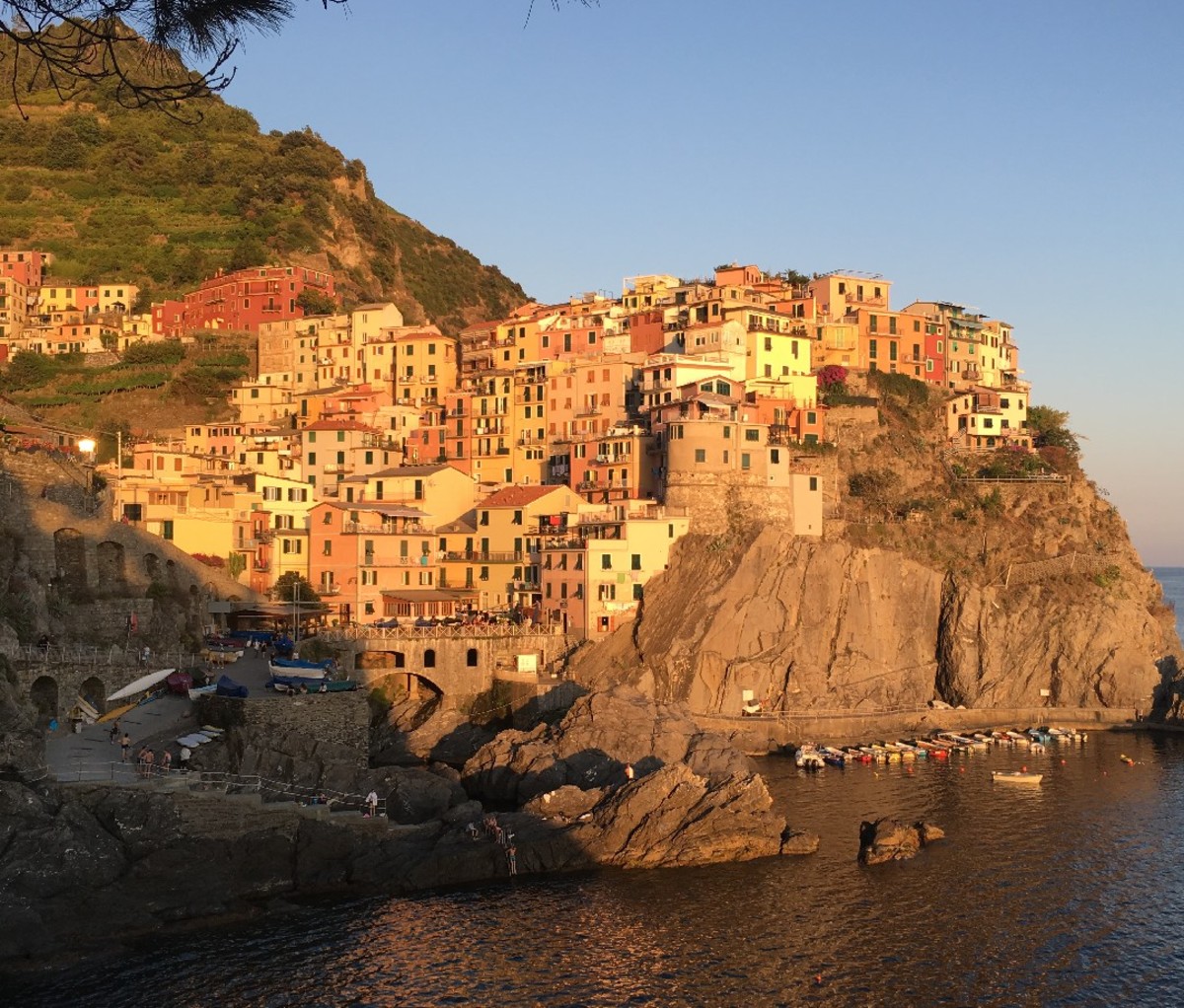
Day 2: Riomaggiore and Manarola
The iconic Cinque Terre (Five Lands), about 90 minutes away by train, has so much to offer that it would be foolish and stressful to try to get a sense of it all in a single day. Divide it up. Head straight for the most easterly village, Riomaggiore, which dates from the 13th century. This fisherman’s town, set within a valley, rises up from a small swimmable cove. It’s said that the rustic tower houses were painted in brilliant and varied colors so the fishermen could spot them as they sailed home.
Hungry? Dau Cila is so well-positioned at the mouth of the cove, boasting such stunning views, that it has no business being as good as it is. Even the interior, with its rock walls and vaulted whitewashed ceilings, is memorable if you can’t get a table outside. Continue your connoisseurship of pesto, because the preparation at Dau Cila—with green beans—is uniquely flavorful and textured.
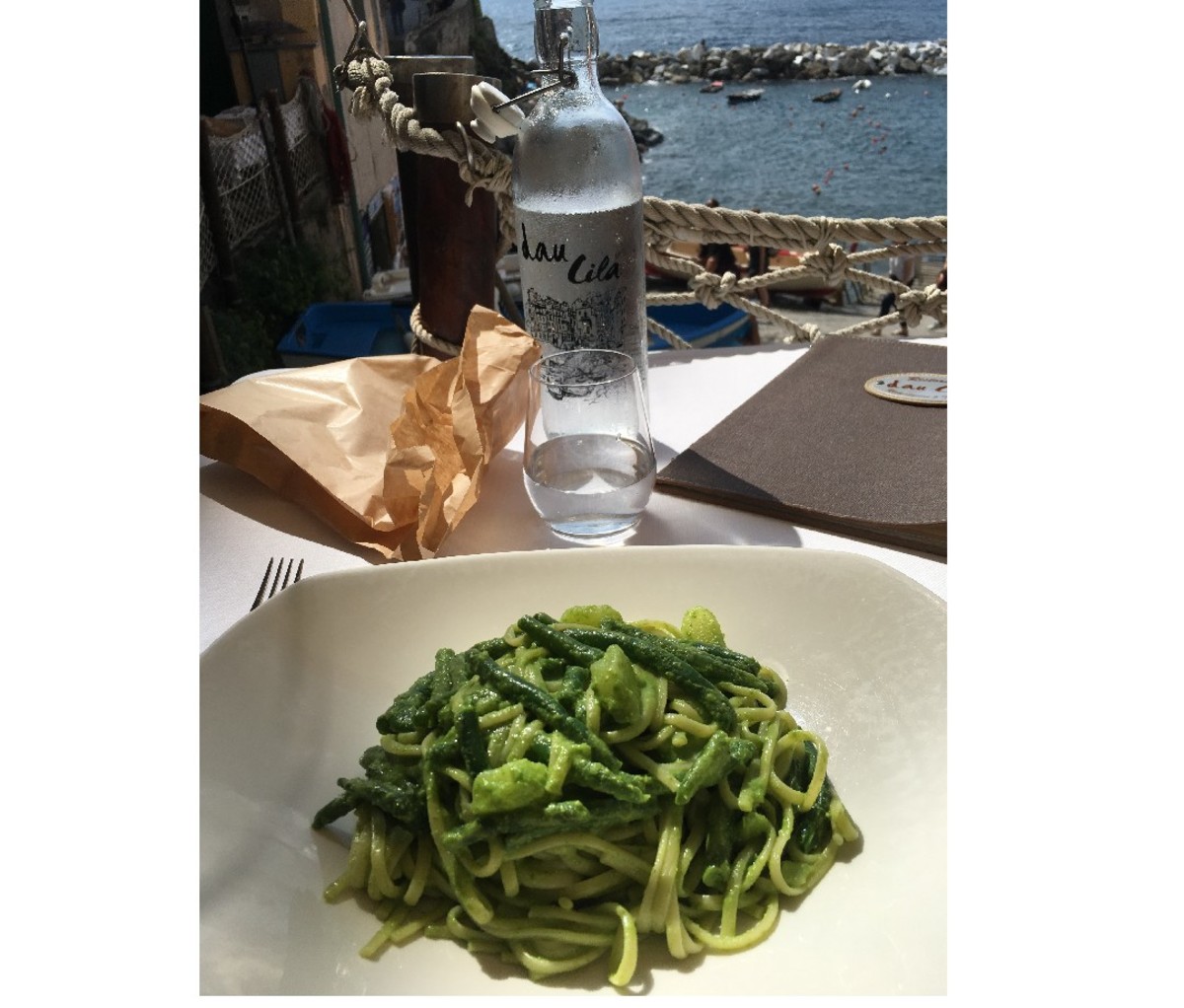
Like most of the other Cinque Terre villages, this is a car-less, pedestrian scene, and walking is one of the joys of the destination. There are narrow passageways, hidden staircases, murals, terraces, and trails along the vineyards to explore. It’s all up to you in terms of how high you want to climb and how taxing you want to make it, but it goes without saying to wear comfortable shoes.
And for those in top shape, one of the signature Cinque Terre experiences is to hike from one village to the next. On the train, it only takes a few minutes between towns, but since there’s a big hill between Riomaggiore and Manarola, plan on an hour to conquer the summit of the Via Beccara walking path. Avoid the middle of the day and wet conditions. The ascent, a seemingly endless series of steep, stone staircases, is extremely challenging, but you know that you’re close to the apex when you encounter vineyard workers hauling boxes of grapes. From the lookout point, you can see the hilltop town of Corniglia (the third of the Cinque Terra “lands”) and the spectacular, sweeping coast.

The descent into Manarola is also steep, but the hike goes by more quickly. Within 20 or so minutes, you’ll spy the town’s pink tower homes. At the bottom, reward yourself with a swim in the cove—or jump from a rock like a local. Once you dry off, if you walk the curving path up and away from the town, look back to see the view captured on the cover of the novel Beautiful Ruins. You won’t be the only one. This is where everyone waits for the sunset over the sea.
Day 3: Sori and Camogli
Strike out on the train to the west for some gorgeous scenery and bragging rights—you might be the only American in Sori, which is about 12 miles away. Bagni Savoia, right on the Lido, is a friendly place where you can get the best antipasto di mare of your life. Owner Rossella Grassi will generously see to that with a bountiful version that includes mussels, clams, langoustines, octopus, sardines, potatoes, and the day’s catch, thinly sliced.
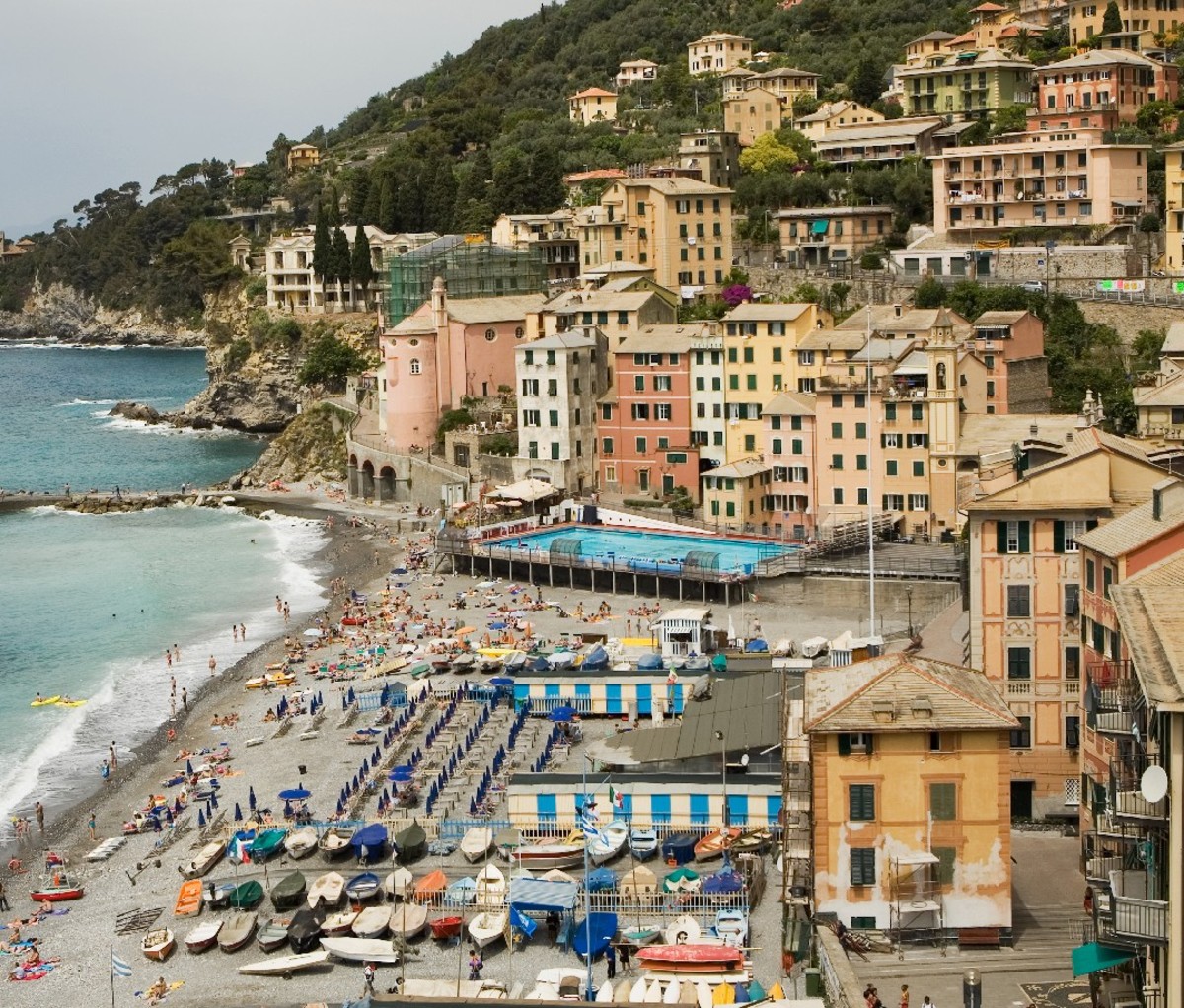
The town square looks like something out of a postwar Italian movie, with locals milling about the piazza, couples licking gelato cones, kids playing soccer, etc. all centered around the Chiesa di Santa Margherita di Antiochia in the square. Perhaps the most unusual thing about Sori is the public swimming pool jutting out from the black pebble spiaggia (beach). For a few euros you can swim a few laps, then relax with an Aperol spritz at the adjacent beach bar, Benvenuti a Bordo, while gazing at the cypress trees that reach over the seaside cliffs.
On the way back, between Sori and your hotel, is Camogli—a popular resort located at the northwestern base of the Portofino peninsula. Here the beach is wide with smooth gray stones, and you’ll notice that many of the pastel houses above the boardwalk are decorated with Liguria’s version of trompe l’oeil (trick of the eye), where the colorful shutters, bricks, stones, and elaborate window frames look real from a distance—but upon closer inspection are revealed to be meticulous, realistic frescoes. You may want to happily linger and skip a traditional dinner to graze on different versions of focaccia Genovese and various tarts at one of Camogli’s fine bakeries, such as Revello Focacceria or Panificio In Scio Canto.
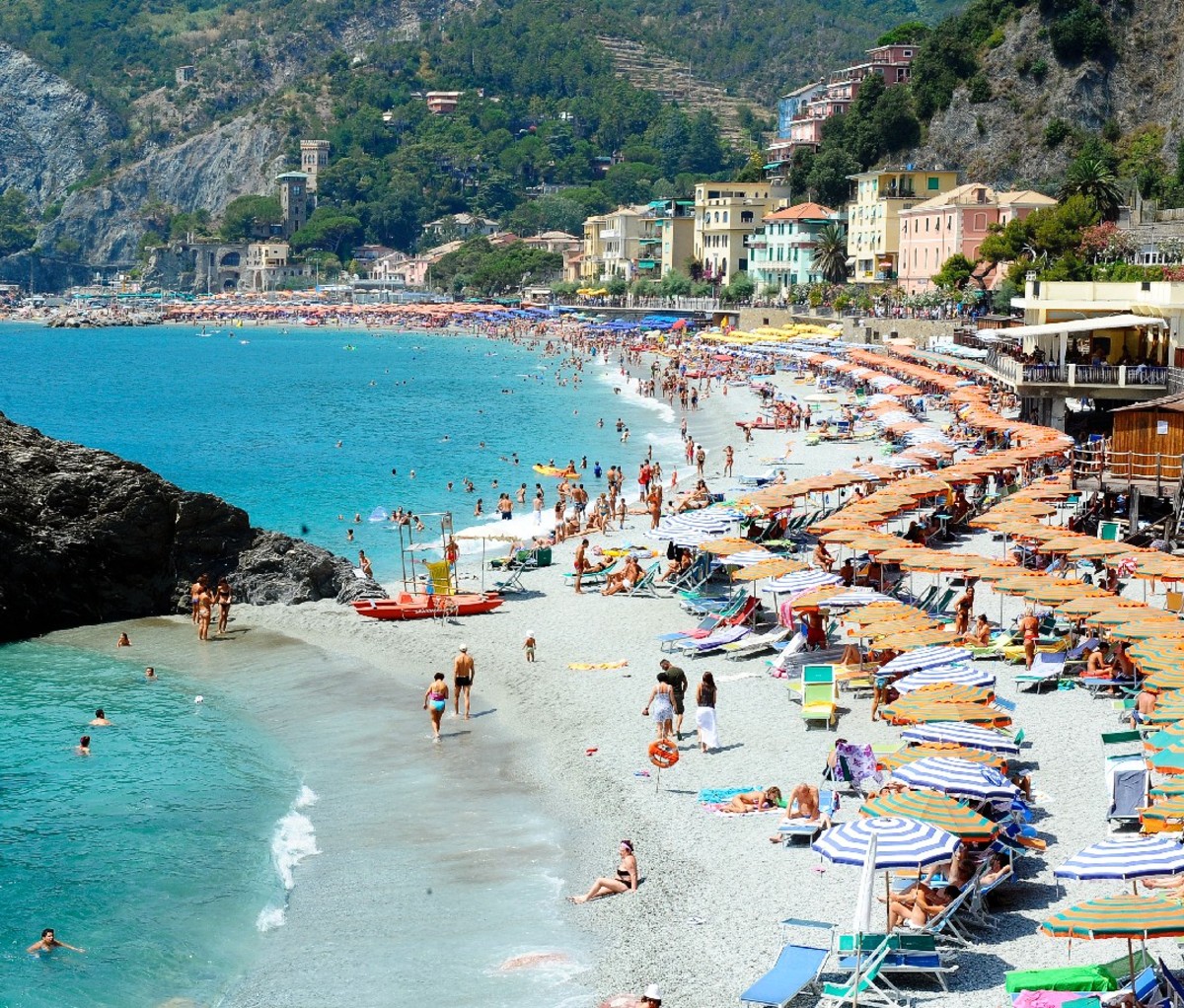
Day 4: Monterosso al Mare
If you’ve planned wisely, your flight out of Milan isn’t until the evening, which means you can hit Monterosso al Mare, the closest Cinque Terre town to Portofino. It’s actually the least characteristic village, the least hilly and vertiginous, and it boasts the sandiest beach—but don’t expect the ordinary. The main spiaggia is divided into two crescents by a rocky pyramid, which makes it one of the most identifiable—and beautiful—beaches in the world.
If you walk along the beachfront, spotted with green-and-orange striped umbrellas, a surprise is in store. At the very edge of Fagina Beach—past the cafes and focaccarias and gelaterias—is a curious and fascinating sight: Il Gigante, a 40-foot classical-style sculpture of Neptune sitting on the side of the cliff. The nearby bar, also called Il Gigante, is a nice spot to grab a panini or bruschetta, but your gaze will continue to be drawn back to sculptor Arrigo Minerbi’s artistry.
The giant is a little over a century old, and he lost his arms during the Allied bombings during World War Two. Otherwise, he looks like he’s been here forever—a sentry keeping watch over one of Italy’s most dramatic coastlines, keeping it safe for your inevitable next visit.
from Men's Journal https://ift.tt/381FxmA


No comments:
Post a Comment